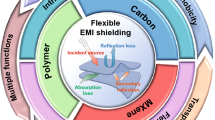Abstract
The research of the sixth generation (6G) cellular network aims at much higher spectral efficiency (SE) and energy efficiency (EE) and would lead to both architectural and component design changes. Over the last decade, simultaneous wireless information and power transfer (SWIPT) has become a practical and promising solution for connecting and recharging battery limited devices due to significant advances in low-power electronics technology and wireless communications techniques. To realize the promised potentials, advanced resource allocation design plays a decisive role in revealing, understanding, and exploiting the intrinsic rate–energy tradeoff capitalizing on the dual use of radio frequency (RF) signals for wireless charging and communication. This article describes the potential integration of radio frequency (RF) energy harvesting technology into 6G cellular network and constitutes an energy harvesting cellular communication system which is expected with much improved EE and prolonged lifetime of user devices, and further discusses its main challenges, design issues and key technologies of energy harvesting communications.





Similar content being viewed by others
REFERENCES
Fan, Yu., Fu, M., Jiang, H., Liu, X., Liu, Q., Xu, Yi., Yi, L., Hu, W., and Zhuge, Q., Point-to-multipoint coherent architecture with joint resource allocation for B5G/6G fronthaul, IEEE Wireless Commun., 2022, vol. 29, no. 2, pp. 100–106. https://doi.org/10.1109/mwc.004.2100528
Chen, T., Yu, J., Minakhmetov, A., Gutterman, C., Sherman, M., Zhu, S., Santaniello, S., Biswas, A., Seskar, I., Zussman, G., and Kilper, D., A software-defined programmable testbed for beyond 5G optical-wireless experimentation at city-scale, IEEE Network, 2022, vol. 36, no. 2, pp. 90–99. https://doi.org/10.1109/mnet.006.2100605
Heidari, H., Onireti, O., Das, R., and Imran, M., Energy harvesting and power management for IoT devices in the 5G era, IEEE Commun. Mag., 2021, vol. 59, no. 9, pp. 91–97. https://doi.org/10.1109/mcom.101.2100487
Yang, Z. and Zhang, Yu., Beamforming optimization for RIS-aided SWIPT in cell-free MIMO networks, China Commun., 2021, vol. 18, no. 9, pp. 175–191. https://doi.org/10.23919/jcc.2021.09.014
Chih-Lin, I., Rowell, C., Han, S., Xu, Z., Li, G., and Pan, Z., Toward green and soft: A 5G perspective, IEEE Commun. Mag., 2014, vol. 52, no. 2, pp. 66–73. https://doi.org/10.1109/MCOM.2014.6736745
Ntougias, K. and Krikidis, I., Probabilistically robust optimization of IRS-Aided SWIPT under coordinated spectrum underlay, IEEE Trans. Commun., 2022, vol. 70, no. 4, pp. 2298–2312. https://doi.org/10.1109/tcomm.2022.3148425
You, C., Huang, K., and Chae, H., Energy efficient mobile cloud computing powered by wireless energy transfer, IEEE J. Sel. Areas Commun., 2016, vol. 34, no. 5, pp. 1757–1771. https://doi.org/10.1109/jsac.2016.2545382
Lu, Ya., Xiong, K., Fan, P., Zhong, Z., Ai, B., and Letaief, K., Worst-case energy efficiency in secure swipt networks with rate-splitting ID and power-splitting EH receivers, IEEE Trans. Wireless Commun., 2022, vol. 21, no. 3, pp. 1870–1885. https://doi.org/10.1109/twc.2021.3107866
Zhou, X., Zhang, R., and Ho, Ch.K., Wireless information and power transfer: Architecture design and rate-energy tradeoff, IEEE Trans. Commun., 2013, vol. 61, no. 11, pp. 4754–4767. https://doi.org/10.1109/tcomm.2013.13.120855
Liu, J., Xiong, K., Lu, Ya., Ng, D., Zhong, Z., and Han, Z., Energy efficiency in secure IRS-aided SWIPT, IEEE Wireless Commun. Lett., 2020, vol. 9, no. 11, pp. 1884–1888. https://doi.org/10.1109/lwc.2020.3006837
Wei, Z., Yu, X., Ng, D., and Schober, R., Resource allocation for simultaneous wireless information and power transfer systems: A tutorial overview, Proc. IEEE, 2022, vol. 110, no. 1, pp. 127–149. https://doi.org/10.1109/jproc.2021.3120888
Funding
This paper was supported by the Key Research and Development Plan of Xuzhou, grant no. KC22083.
Author information
Authors and Affiliations
Corresponding author
Ethics declarations
The authors declare that they have no conflicts of interest.
About this article
Cite this article
Bencheng Yu, Ren, Z. & Tang, S. Radio-Frequency Energy Harvesting Technology for Future Communication Systems. Aut. Control Comp. Sci. 57, 619–626 (2023). https://doi.org/10.3103/S0146411623060123
Received:
Revised:
Accepted:
Published:
Issue Date:
DOI: https://doi.org/10.3103/S0146411623060123




